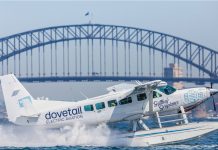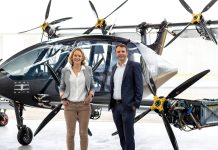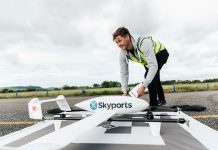Aviation is about to enter the most exciting time since the introduction of the jet age, a NASA executive told Oxford University this week.
Associate Administrator for NASA’s Aeronautics Research Mission Directorate, Jaiwon Shin, was speaking as part of the OxfordSparks project to promote science and technology. ‘I often get the question: isn’t aviation a sunset industry? Far from it!’ he said, pointing out that an estimated 36,000 new air transport aircraft would be required over the next 12 years.
Aviation was benefiting from the digital transformation of the wider economy, Dr Shin said. Aircraft, manufacturing and maintenance were all becoming smarter thanks to digital technology and the data it generated.
Looking ahead, Dr Shin discussed the economic rationale that could eventually favour blended wing-body designs over today’s ‘tube and wing’ aircraft architecture. The reasons for this include fuel consumption and noise advantages.
He also discussed the development of electric aircraft, with turboelectric hybrid airliners, where electric motors are powered by a combination of gas turbine and battery, as a first step.
‘Until a few years ago, if someone talked about this kind of concept they would be told “you’re crazy,” or “you need to be in Hollywood, where they make sci-fi movies”. But now we’re serious. The technologies are converging—batteries and power management systems—those technologies are coming together.’
Supersonic transport could also return, Dr Shin said, noting the several supersonic transports underway and NASA’s efforts in developing aircraft with a smaller sonic boom. Supersonic noise had restricted the use of Concorde, he said. ‘(For a) guy like me, airplane junkie, this is music.’ But he conceded ‘normal people’ may feel differently.
With new designs to minimise sonic booms, they would sound more like a distant storm rather than a thunderclap, he said.
Dr Shin discussed drones and smaller electric aircraft in parallel, pointing out that a common store-bought drone represented the convergence of eight advanced technologies, including batteries, high-efficiency motors and satellite navigation, and was ‘another brainchild of the digital revolution’.
Proposed urban air vehicles were another example of these technologies converging. Intriguingly, both established companies such as Airbus, and start-ups including Uber, Lilium and Volocopter, were working on such projects, he said.
About Uber he said, ‘They’re serious. This is not a marketing gimmick.’
Dr Shin said there would be many non-technical challenges, including safety standards. ‘We have no idea what they will be. It seems unlikely that electric urban aviation would match the safety standard of airline transport but it would probably be a heck of a lot better than ground transportation.’ Noise and cyber-security were unknown factors.
‘I’m not saying this is easy, but this time two things are happening,’ he said. ‘Technologies are converging. It’s feasible over time. And a lot of deep pockets are investing.’
Dr Shin said urban air transport had the potential to change lifestyles as profoundly as international air travel had done in the late 20th century and will change land use and the environment in cities.




